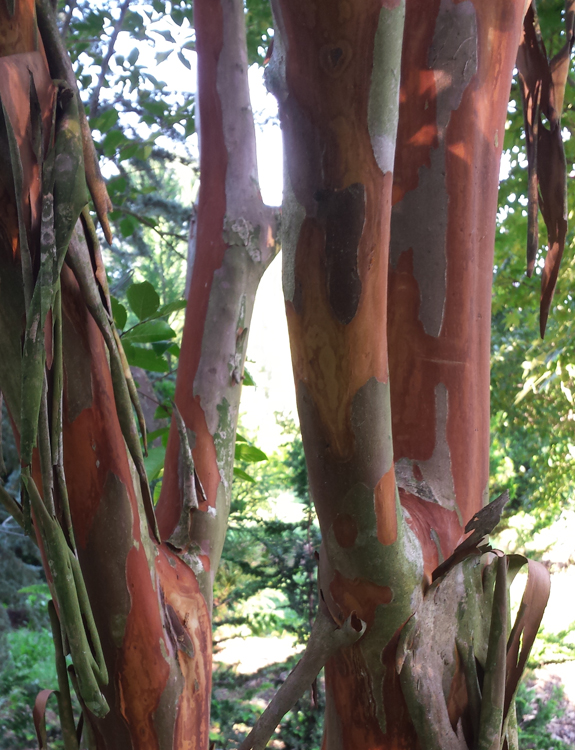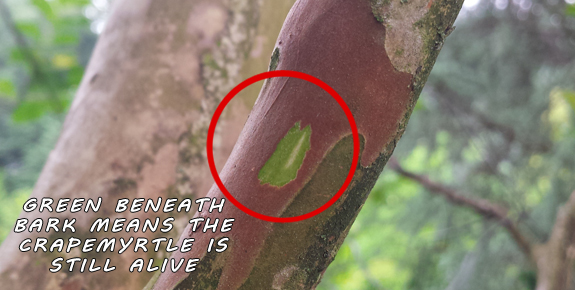Thoughts

Charming Crapemyrtles
It is hard to beat the colorful impact that Crapemyrtles (Lagerstroemia indica) provide in the summer months and the intriguing exfoliating bark highly visible during winter. Their large clusters of blossoms are visible from afar and stunning up close. Varieties come in a range of pinks, reds, whites, and purples. ‘Pocomoke’ and ‘Cherry Dazzle’ are two dwarf Crapemyrtles that typically grow between 3 to 5 feet high and wide.
Unfortunately, Southeast Pennsylvania is at the northern growing range of most Crapemyrtles. Our long and cold winters can cause Crapemyrtles to push their leaves late, or sometimes not at all. This past winter was especially tough on the Crapemyrtles growing in our region.
To check if your Crapemyrtle is dead or still dormant, take a knife and carefully nick the bark. If there is green visible below the outer bark layer give the plant a little more time to leaf out. If all you see is brown, then the branch is completely dead, and it is time to replace the plant.
When planting Crapemyrtles, select a location that will be protected from harsh winter winds. Nooks along buildings can create sheltered locations that help protect Crapemyrtles during the winter. Variety selection is also important. ‘Natchez’ is one of the hardest varieties and suffers the least amount of die back. Pruning Crapemyrtles between August and December significantly reduces their cold hardiness. Ensure any pruning on Crapemyrtles is completed before August.
With the correct variety, location, and pruning habits you can enjoy this beautiful plant and all it has to offer.


